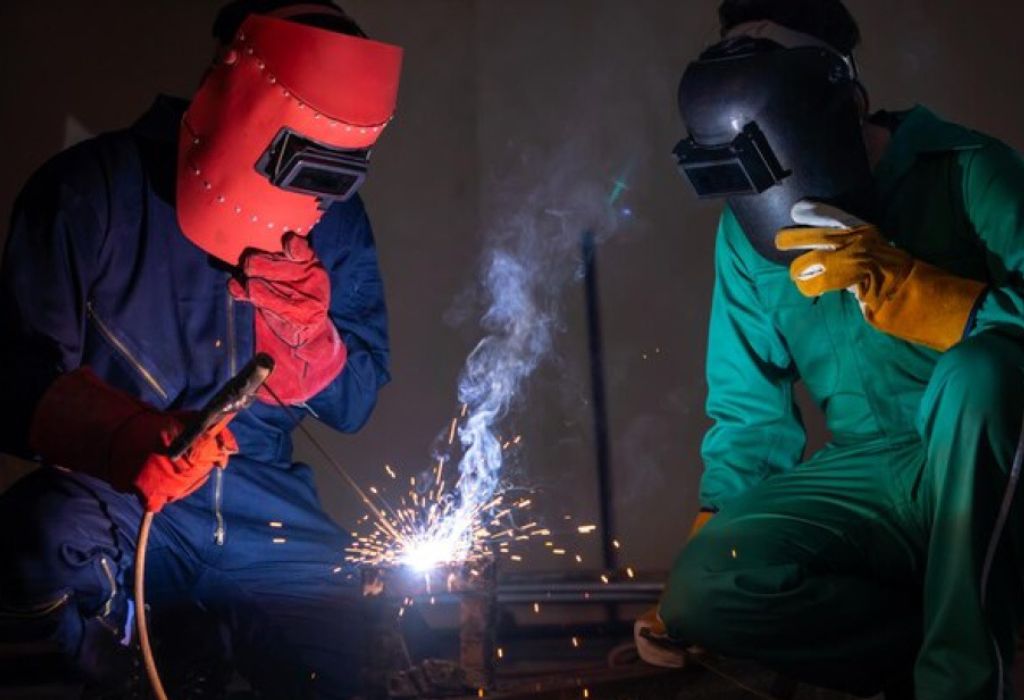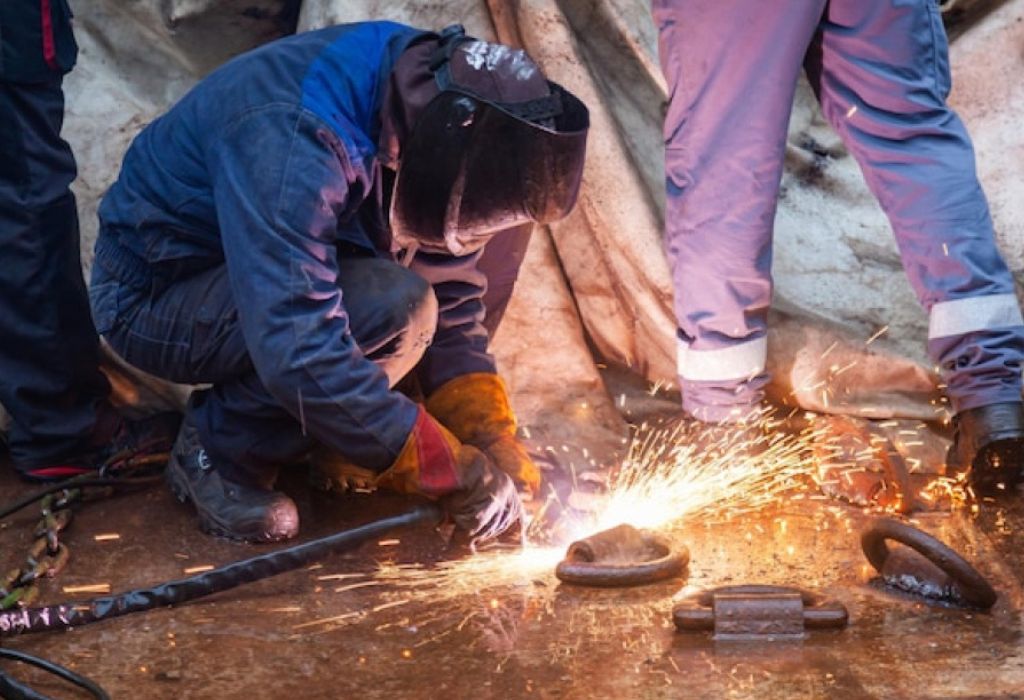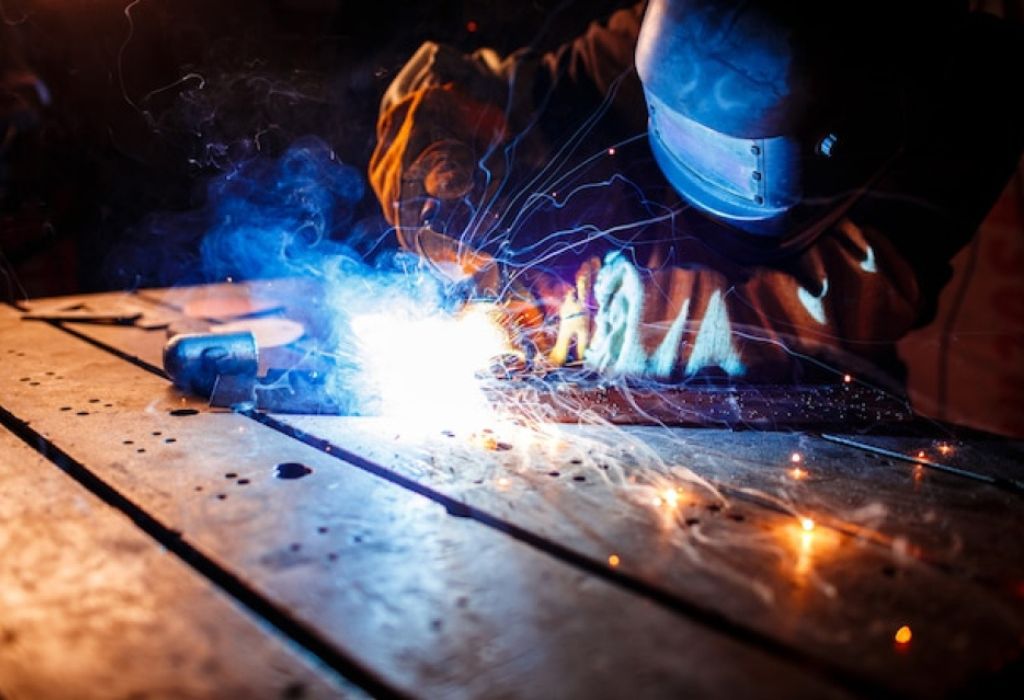Every spark that lights up a steel beam or pipeline comes from a welder’s steady hands. But behind the skill lies a bigger question—how to become a union welder who earns top wages, receives benefits, and builds a lifelong career.
Across construction sites and industrial plants, union welders enjoy some of the most stable, well-paid positions in skilled trades. Yet many beginners don’t know where to start, what certifications are needed, or how union apprenticeships actually work.
According to the U.S. Bureau of Labor Statistics, welders earn a median annual wage of $48,940, while union members often make 20–25% more thanks to collective bargaining and benefit programs (BLS.gov). That gap makes joining a union not just a job upgrade—but a long-term investment.
This guide breaks down everything you need: from eligibility and apprenticeship to testing, pay progression, and advancement.
What a Union Welder Does

Union welders work on projects backed by labor agreements that guarantee fair pay, benefits, and safety standards. They handle structural steel, piping, ship repair, and fabrication across sectors like construction, power generation, and manufacturing.
Union membership connects welders to collective bargaining agreements (CBAs) that regulate wages, training, and job dispatching.
Q&A Subpoints
Which industries hire union welders?
Heavy construction, shipyards, refineries, and energy plants all depend on union welding crews.
What welding processes are most in demand?
SMAW, GTAW, and FCAW remain top choices for field and shop work.
What benefits do union welders get?
Comprehensive healthcare, pension plans, paid leave, and continuing education through union training centers.
Do union welders travel?
Yes, many travel nationwide for outages, shutdowns, or government infrastructure projects.
Union Pathways and Trade Options
Different unions specialize in particular types of welding. The United Association (UA) focuses on pipefitting and steamfitting; Boilermakers handle pressure vessels; Ironworkers focus on bridges and structural frameworks; and Sheet Metal Workers deal with HVAC and ductwork.
Choosing a union depends on the type of welding you want to master and where you live.
Q&A Subpoints
Which union is best for pipe welding?
The UA or Boilermakers, since both emphasize pressure piping and vessel work.
Which covers structural steel?
Ironworkers’ locals handle bridge and commercial construction.
Can you switch unions later?
It’s possible, but you may need to restart seniority or certifications.
How to find a local union?
Search national union directories or the AFL-CIO’s “Find a Local” database.
Basic Requirements to Join
Before applying, you must meet general standards: be 18 or older, have a high school diploma or GED, pass drug screening, and possess valid work eligibility. Good eyesight, stamina, and comfort with heights are also essential.
Q&A Subpoints
Is a GED accepted?
Yes, nearly all union apprenticeship programs accept GEDs.
Do I need previous experience?
Not always—pre-apprenticeship or community college programs can help.
Are drug tests mandatory?
Yes, random and pre-employment drug testing is standard.
Can I join if I’m already employed?
Yes, but you must complete apprenticeship training through your local union’s schedule.
Training Routes: Apprenticeship vs School
Most union welders start through a Joint Apprenticeship and Training Committee (JATC) or Joint Apprenticeship and Training Fund (JATF). These programs combine classroom lessons with paid, supervised work experience.
Alternatively, attending a trade school before applying can give you a head start. Many JATCs accept credits from accredited welding programs, shortening your training.
Q&A Subpoints
How long is an apprenticeship?
Typically 3–5 years, depending on the trade and local program.
Do apprentices get paid?
Yes, starting at 50–60% of journeyman wages and increasing yearly.
Can school credits transfer?
Yes—most locals allow partial credit for proven training.
How to apply for an apprenticeship?
Contact your local union or check its website for application periods.
Certifications Every Union Welder Needs
Union welders must meet industry code standards and maintain updated records. The most common are:
- AWS D1.1: Structural steel certification
- ASME Section IX: Boiler/pressure vessel code
- API 1104: Pipeline welding
- OSHA 10 or 30: Safety training
- TWIC Card: For port or refinery work
Q&A Subpoints
Which test proves field readiness?
The 6G pipe test shows you can weld in all positions.
Do certifications expire?
Yes, continuity logs must be updated every six months.
Are safety cards required?
Yes, OSHA and CPR cards are often mandatory.
Can union halls test you?
Yes—locals run their own weld test facilities for applicants.
The Application and Selection Process
Most locals open applications once or twice per year. You’ll need transcripts, ID, resume, and sometimes a math or mechanical aptitude test. After that comes an interview and ranking on an eligibility list.
Once selected, you pay initiation fees and monthly dues before starting your first job assignment.
Q&A Subpoints
Is there a waiting list?
Yes, ranked applicants are dispatched as jobs open.
Are fees expensive?
Typically $100–$300 initiation, then modest monthly dues.
Do tests include math?
Yes, expect algebra and measurement questions.
How soon can I start work?
Once accepted, after safety orientation and paperwork.
Building Skills Before You Apply

Even before joining, gaining hands-on practice helps you stand out. Focus on welding positions like 3G/4G/6G, reading blueprints, and practicing clean weld beads.
Q&A Subpoints
Which process should beginners learn first?
Start with SMAW or FCAW before moving to TIG.
Do online welding courses help?
They’re useful for theory, but in-person practice is essential.
Can I build a portfolio?
Yes—photographs of welds and instructor references show readiness.
Are pre-apprenticeships worth it?
Absolutely—they often lead directly into full apprenticeships.
Joining a Local Union
To join, contact your local union hall or building trades council. Attend open houses, orientations, and community events to network. Some locals offer pre-apprenticeship programs to prepare applicants for testing.
Q&A Subpoints
Do locals prefer referrals?
Consistency, professionalism, and readiness matter more than who you know.
How to follow up after applying?
Politely check in monthly until classes or job calls begin.
Are pre-apprenticeships paid?
Sometimes, but many are volunteer-based training programs.
Does veteran status help?
Yes, veterans often receive preference or early interview slots.
Your First Day as an Apprentice
Once you’re accepted, expect strict schedules and safety rules. You’ll work under journeyman supervision and log hours toward your required on-the-job training.
Bring essential tools—welding hood, gloves, tape measure, grinder, and chipping hammer. Respect the job site hierarchy and follow foreman directions closely.
Q&A Subpoints
Who supervises apprentices?
Usually journeymen or foremen with decades of experience.
What safety gear is mandatory?
Helmet, leathers, gloves, boots, and eye protection.
How to track hours?
Through your JATC online portal or paper logs.
Can apprentices refuse unsafe work?
Yes—report concerns through proper union safety channels.
Pay Progression and Benefits
Apprentices start at roughly 50–60% of journeyman wage and increase every 6–12 months. Upon completion, they reach full scale, often earning $35–$50/hour plus benefits.
Union welders enjoy comprehensive health insurance, pension, annuity funds, and training stipends. Many locals also pay per diem for travel work.
Q&A Subpoints
How fast do raises come?
After each year or set of hours completed.
What are dues for?
To fund representation, benefits, and training programs.
When do benefits start?
Usually after meeting required hours, such as 400–600 per quarter.
Is overtime common?
Yes—shutdowns and large projects often require extended shifts.
Passing the Union Weld Test
Every new welder must pass a performance qualification test (PQR) at their hall or training center. This test verifies technical skill, joint fit-up, and weld quality under inspection.
Q&A Subpoints
What’s tested most often?
Stick (SMAW) or TIG (GTAW) on plate or pipe, depending on trade.
How long does testing take?
Two to four hours including setup and cleaning.
Why do people fail?
Lack of penetration, porosity, or poor bead control.
Can you retest?
Yes, usually after extra practice or training time.
Advancement and Specialization
After finishing apprenticeship, welders become journeymen eligible for foreman, steward, or rig-welder roles. Many unions offer upgrade classes for advanced certifications—orbital TIG, exotic alloys, or high-pressure pipe.
Q&A Subpoints
What is a rig welder?
A welder with a mobile setup who travels to field jobs.
How to earn more money?
Take advanced certs, gain experience, and pursue leadership roles.
Can welders move into inspection?
Yes—AWS Certified Welding Inspector (CWI) is a common next step.
Are upgrade classes free?
Usually subsidized or free for active union members.
Traveling and Dispatch Rules
Union dispatch systems call welders to jobs in order of seniority and qualifications. Traveling to other locals is possible under portability agreements or travel cards.
Q&A Subpoints
Can I take work outside my home local?
Yes, with permission or interlocal agreements.
Do travelers get per diem?
Often—especially for refinery or shutdown projects.
When are peak seasons?
Spring and fall are busiest for maintenance outages.
How to stay high on the list?
Maintain good standing, certifications, and readiness.
Common Mistakes to Avoid

Rushing applications, skipping practice, or ignoring safety rules can derail your progress. Always stay prepared, organized, and respectful at the hall and job sites.
Q&A Subpoints
What’s the top reason applicants fail?
Unpreparedness for the weld test or poor attendance.
Can attitude affect hiring?
Yes—reliability and teamwork matter as much as skill.
What if I miss an application window?
Check neighboring locals or sign up for pre-apprenticeship.
How to recover from a failed test?
Seek feedback, retrain, and retest when ready.
Tools, Gear, and Budgeting
A new apprentice invests in quality PPE and tools. Expect $300–$700 in startup costs for hoods, gloves, jackets, and hand tools.
Q&A Subpoints
What shade lens for stick welding?
Typically 10–12 depending on amperage.
Leather sleeves or full jacket?
Full jackets for heavy SMAW; sleeves for TIG or light work.
Are tool stipends available?
Rarely—plan personal purchase.
How to protect tools on site?
Lockable toolbox or gang box storage.
Long-Term Outlook for Union Welders
Demand for union welders is expected to remain strong through 2033, fueled by infrastructure investment and energy transition projects. According to BLS, about 42,000 openings per year are projected as experienced welders retire (bls.gov).
Q&A Subpoints
Is automation a threat?
Not for field welding—robots handle repetitive shop tasks, not complex installations.
Which industries are growing fastest?
Infrastructure, bridge repair, shipbuilding, and renewable energy.
How to stay employable?
Keep certs current and take upgrade classes regularly.
Do unions offer lifelong learning?
Yes—most provide free or low-cost continuing education.
Conclusion
Becoming a union welder means mastering a craft, earning fair wages, and securing benefits that protect your future. The journey starts with preparation—meeting requirements, applying for apprenticeship, and passing code tests.
With persistence, discipline, and skill development, anyone can rise from a trainee to a journeyman and beyond. If you’ve ever asked how to become a union welder, the answer is clear: start now, train hard, and join the brotherhood that builds America one weld at a time.

I’m Darrell Julian, the founder, lead writer, and hands-on welding enthusiast behind ArcWeldingPro.com. With more than 15 years of real-world welding experience, I created this platform to share what I’ve learned in the field, in the shop, and in the heat of the arc.


